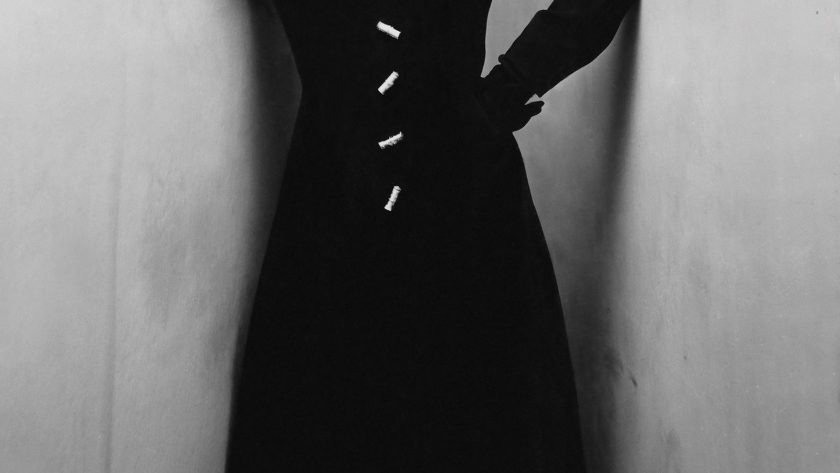Long before the summer showing of Schiaparelli’s couture collection, Daniel Roseberry, the house’s creative director, gathered his thoughts as he always did: by starting from the future that he hoped to reach. He imagined a review of the collection in the press, and wrote a version of it, line by line. He grew up in Texas and, on arriving in Paris to lead Schiaparelli toward a new phase of growth in 2019, worked to find a narrative order for the rangy span of his creative life. Roseberry loves reviews, their clarity and judgment—given the choice, he’d often rather read reviews of movies than see them. Imagining a critic approaching his fashion helps him find its big emotions, its broad sweep. “If I can identify and anticipate in my mind what people want to see, I can work backward,” he explained. “How do I make that review come to life?”
A few months later, Roseberry is assessing a brown felt coat with a swirling, cowl-like lapel being walked up and down the room before him by a model with neat auburn hair. This is Paris, early July, and the couture collection he imagined in the spring will travel down the runway in just two days’ time. At the moment, more than two dozen pieces, four tables of accessories, and a cast of models must be matched and gathered into a coherent whole. If he fails, his runway will seem scattershot and random. If he succeeds, the collection will achieve its own daring inevitability: the haunted rightness of a strange dream brought to life.
“Some of these could be good,” he murmurs, picking up bonelike gold-and-stone extensions, to be used as earrings.
“Separate?” one of the models asks.
Roseberry nods. “One, two,” he says, gesturing at his own ears.
When the jewels have been placed, Roseberry contemplates the revised look, a hand to one side of his silvering beard. At 37, he’s of medium height and build, usually dressed in Carhartt work trousers, no belt, track shoes, and athletic socks pulled high. He has a gentle, placid style of speech, like a high school counselor trying to calm a jumpy student; it breaks at times into a bubbly laugh. He grew up a long way from here, he’s usually the first to point out, and relishes his incongruities. “I think my work can be summed up in Plano, Texas, Place Vendôme,” he says. “Everything that works at Schiaparelli works when the New World starts talking to the Old World and the Old World answers back.”
In this moment, the Old World voices are especially strong. Roseberry’s team is fitting models in a salon of the exquisite 18th-century French style: high ceilings, double doors. This was the Place Vendôme town house, the Hôtel de Fontpertuis, where for decades Elsa Schiaparelli ran her couture trade. After a renovation—honey-colored herringbone floors, eerie creped plaster over the molding of the third floor, where the ready-to-wear line is shown—it has been restored as the spiritual center of the brand.
Across her lifetime, Elsa Schiaparelli, born into an eclectic family of Italian scholars in 1890, befriended an array of artists including Marcel Duchamp, Man Ray, and Francis Picabia; she made her fashion reputation first in trompe l’oeil knitwear. By the 1930s, when she installed herself in the Place Vendôme, she had carried Surrealism into couture. There was the hat shaped like a high-heel shoe, the Salvador Dalí lobster that she printed on a silk-organza dress. Schiaparelli is today one of the smallest and most exclusive of Paris’s heritage houses, a cosseted jewel in the crown of French luxury, but it remains one of the most uncanny, too, a couturier possessed by spooky magic.
When Roseberry became creative director, in 2019, after a decade at Thom Browne, where he’d ended up design director, he was swiftly hailed as Elsa Schiaparelli’s 21st-century heritor: a designer who could carry the house’s Surrealist affinities into the digital age, reimagining her mystical iconography for a time more haunted by the fame and fantasies of American pop. Tilda Swinton, whom Roseberry has often dressed, describes him as “unnervingly symbiotic in his capacity to channel and take forward the sensibility of not only the house itself but also the person of Elsa Schiaparelli and the atmosphere of the fellowship around her.



